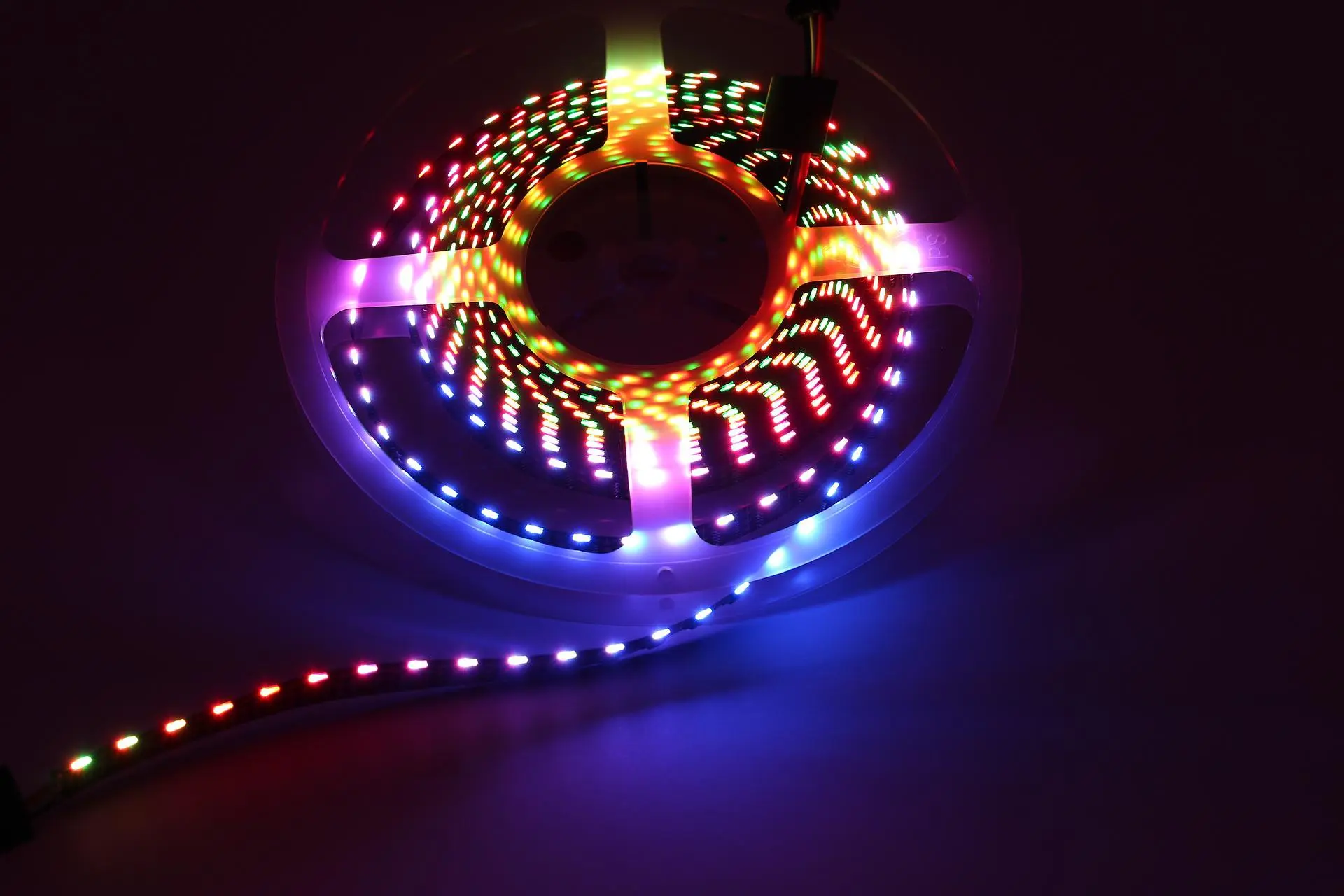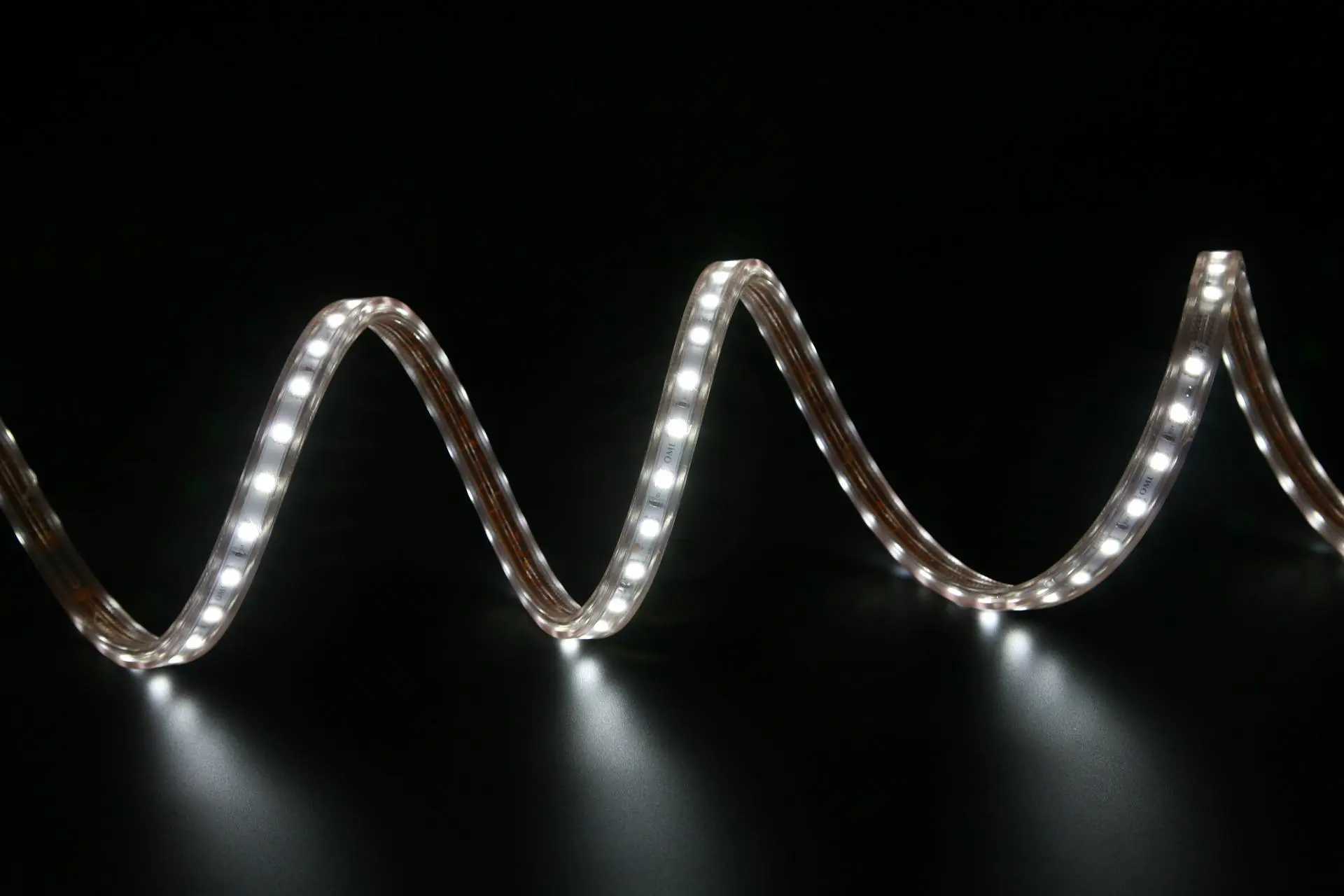LED strips are a fantastic product that helps to personalise your home. You can get them in a range of brightness and colours. However, occasionally, you may find that your LED strip lights are not working. Faulty lights can be frustrating, especially if you’re unsure what the problem is.
With our years of experience in the lighting industry, we’ve put together this simple guide on what to do when your led strip lights are not working.

5 reasons why your LED strip is not working and how to fix them
Scenario 1: LED strip lights not working at all
So, you’ve plugged in your LED strip, but it’s not working. Here are a few things you can try to get it up and running again:
1. Check that the power supply is working
The first thing you should do is check that the power supply is working. You can do this by plugging it into another outlet or testing it with a multimeter. Be sure that you’ve picked up the correct power supply. For example, if your supply is 12V DC, you cannot use it to supply a 24V LED strip. If the power supply is working and is correct, move on to the next step.
2. Check that the connections are secure
Next, you should check that all the connections are secure. This includes connecting the power supply and the LED strip and junctions between different strip sections. If you’re using a controller, check that the connections between the controller and the LED strip are secure.

3. Try a different controller or power supply
If you’re using a controller, try swapping it out for another. If that doesn’t work, connect the LED strip directly to the power supply. This will bypass the controller entirely.
4. Check for damaged LEDs
If you’ve tried all of the above and your LED strip still isn’t working, one or more of the LEDs may be damaged. You can check this by carefully inspecting each LED. The LED will need to be replaced if you see any physical damage, such as a cracked lens.
5. Check for signs of short circuits
A short circuit can occur if the positive and negative leads of the LED strip touch each other. This will usually cause the entire strip to stop working. First, perform a visual check of the strip to see any signs of a short circuit. If you see any, cut out the section of the strip with the short and reconnect the two ends.
If your LED strip still isn’t working after following these steps, there is likely a problem with the strip itself. You can use a multimeter to test the strip for continuity. If there is no continuity, the multimeter will indicate infinite resistance. If there is any resistance value shown, this will indicate there is a short circuit somewhere along the strip.
The solder joint between the LED chip and the lead wire is a common short circuit location. You can check this by carefully inspecting the solder joints on each LED. If you identify a bad LED, the strip can be cut, the faulty section removed, and the two ends rejoined.

Scenario 2: Part of the LED strip is not working
If only part of your LED strip is working, there may be a break in the strip or a loose connection. You can generally always assume that led strip lights only half working is a sign of breakage. First, check the entire length of the strip for any signs of damage.
If you find a break, cut out the damaged section and reconnect the two ends. When cutting out the damaged section, you may not want to reduce the overall length; instead, swap in a replacement length. You can do this easily using LED tape to tape connectors, which allow you to slip two pieces of tape together and secure them with a clip. It is a quick process and can be a lifesaver when LEDs have been installed in hard-to-reach places.
If the LED strip is not physically damaged, there is likely a loose connection somewhere. Check all the connections and be sure that they are tight. If you’re using a controller, you may want to try swapping it out for another.
Scenario 3: One colour is not working
If one or more colours of your RGB LED strip are not working, or your led strip is showing the wrong colour, it is likely that there is a problem with the controller. Try swapping out the controller for another one.
If that doesn’t work, connect the LED strip directly to the power supply. This will bypass the controller entirely and help confirm if your led light strip is stuck on one colour. There may be a fault with the soldering on the negative connection on that specific colour or a break in the connection missing colours.
If you’ve ruled out the controller and you cannot find a break on the LED strip, try rebuilding the circuit from scratch, beginning with the
Scenario 4: The LED strip is flashing
If your LEDs are flashing in a regular pattern, i.e. one and off at one-second intervals, then the power supply is overloaded – you are trying to power too many LED lights with the power supply.
You will need to either increase the power supply size, reduce the amount of LED strips, or add a second power supply and split the project between the two.
Scenario 5: The LED strip is extremely hot
There are two potential causes for an LED strip that is excessively hot. The first is a power issue, which can be caused by using the wrong power supply or connecting the power supply incorrectly. LED strips are 12V or 24V; if you connect a 24V power supply to a 12V strip, you will cause them to overheat and eventually die.
The second potential cause is a short circuit. This can occur if the positive and negative leads of the LED strip touch each other. This will cause the entire strip to overheat. If this occurs, the strip will burn out within hours, and you may well smell the telltale smell of burning plastic before this happens.
If you identify that you have the wrong power supply, the solution is clear – change it over for the correct power unit. If you have a short circuit, you will need to check the strip carefully for any solder crossing the connections. If found, scrape away the offending solder with a knife or resolder the connection so that the positive and negative are no longer bridged.
Conclusion
LED strip lights are easy to work with, but things can go wrong. Projects can be saved by taking a few minutes to troubleshoot the issue. In most cases, it is a quick and easy fix. If you’re still having trouble, there are plenty of online resources and forums where you can ask for help from more experienced makers, but by following the steps in this article, you should be able to identify and fix many of the common issues that you might have with your own LED strip lights.
FAQs
There can be a number of reasons why your LED light strips might not be working. Check the power supply, controller, and connections first. If those are all working, there is likely a problem with the LED strip itself. Use our scenarios to identify which type of problem you’ve got.
LED strips do not need resetting, they should switch on and off reliably, so if you’ve turned yours on and they are not working correctly, you’ll need to identify the problem and work to fix it. Use our short guide, which covers the most common issues.
There are a number of potential problems that can crop up with an LED strip, and therefore there is no single ‘fix’ that will work in all cases. Use our troubleshooting guide to identify the problem, and then follow the steps to rectify it.
Leave a Reply